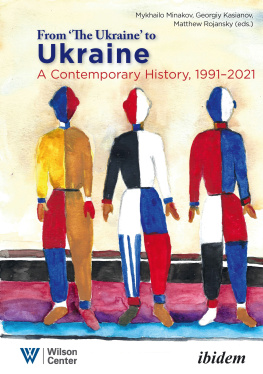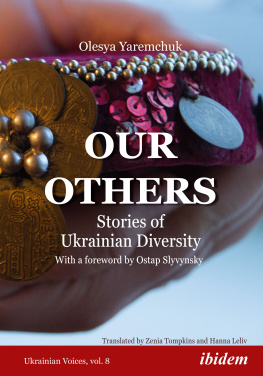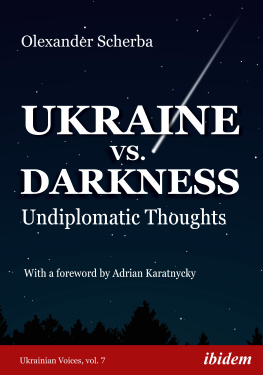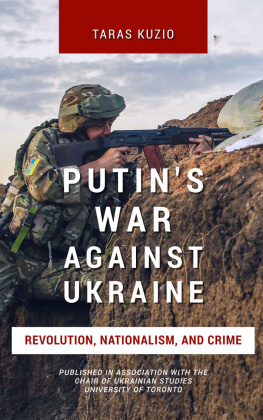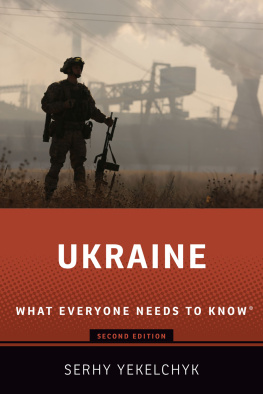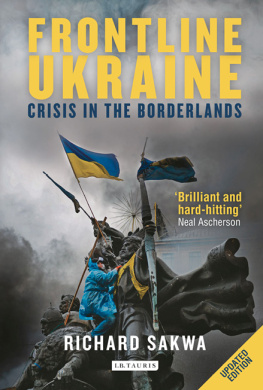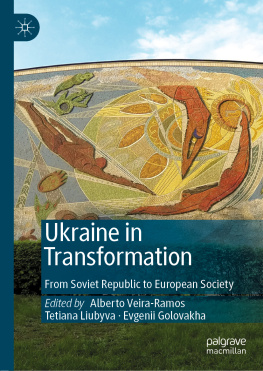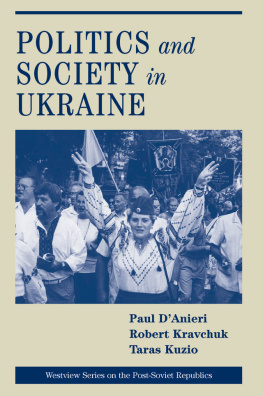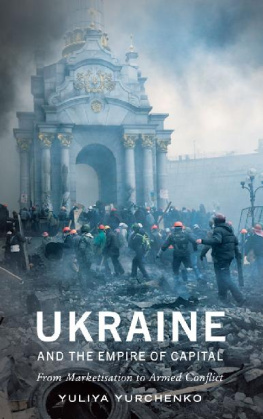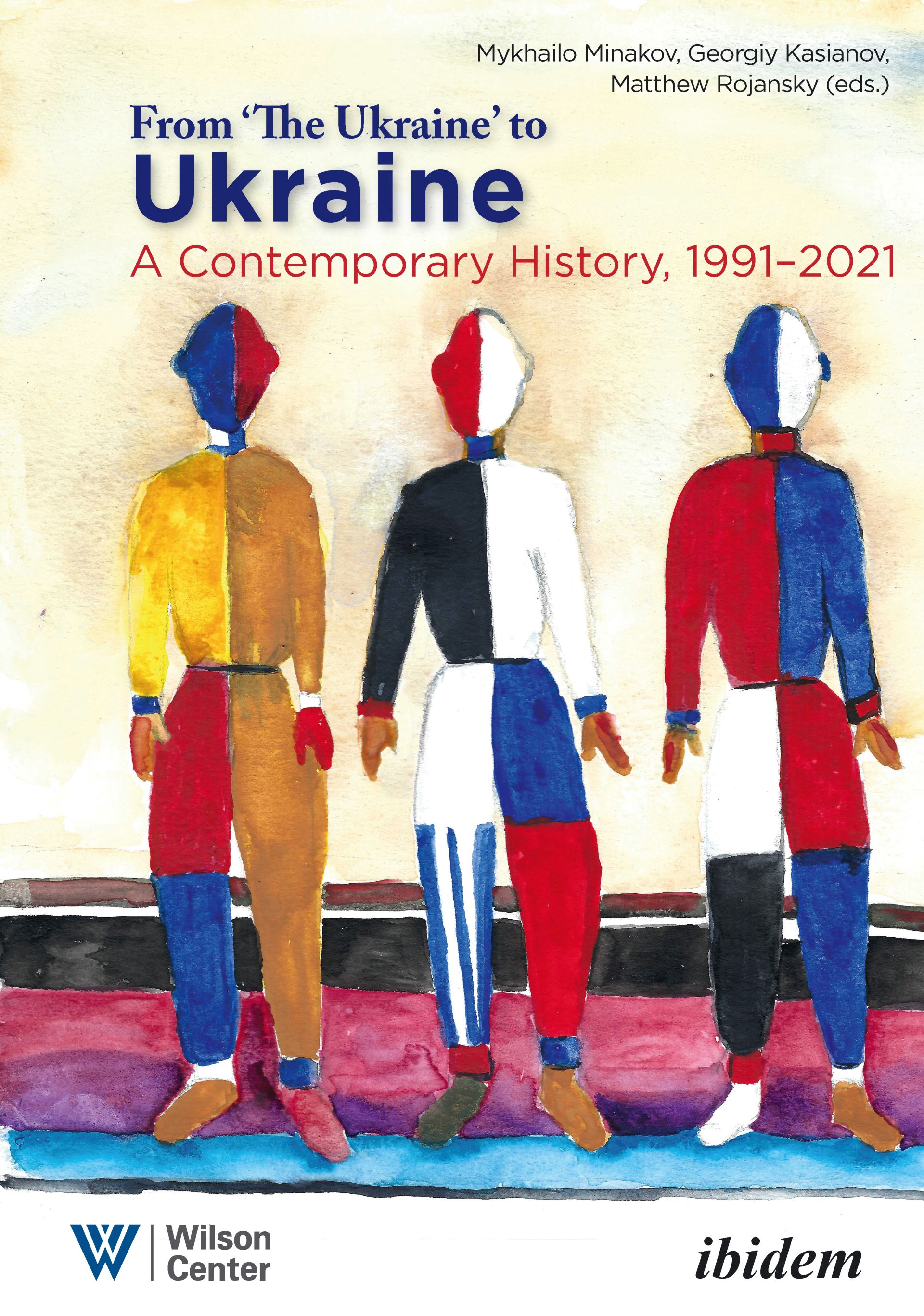ibidem-Press, Stuttgart
Contents
Acknowledgments
This book was inspired by the research and discussions of the Ukrainian, American and international scholars who have worked at the Woodrow Wilson Centers Kennan Institute over the past twenty years. We appreciate their creativity, professionalism, and enthusiasm for our project and this publication. Indeed, the contributors to this volume, to whom we are eternally grateful, reflect the diversity and quality of scholars who have come to the Kennan Institute to advance their research on Ukraine over many decades.
We also thank the Wilson Centers director, president, and CEO, Jane Harman, the senior executive leadership of the Center, and the Board of Trustees for their ongoing support of high-quality scholarship on Ukraine, US-Ukrainian relations, and the wider region. We are certain that this volume showcases the deep regional expertise for which the Wilson Center has been recognized by its peers as number one in the world.
We especially thank Marjorie Pannell and Kiley McCormick for making the language of this book clear and accessible. The majority of the contributors to this book use English professionally but are not native speakers. Thus it is thanks to Marjories and Kileys skillful editing that this volume has come together as a consistent and appealing whole.
Last but not least, we highly appreciate the steadfast support and wise counsel of the Kennan Institute staff, including Izabella Tabarovsky, William Pomeranz, Joseph Dresen, Mattison Brady, Morgan Jacobs, Jemile Safaraliyeva, Victoria Pardini, and Cindy Garcia. Without their efforts this project could never have been realized.
Mykhailo Minakov, Kyiv, Ukraine
Georgiy Kasianov, Kyiv, Ukraine
Matthew Rojansky, Washington, D.C.
Introduction: From the Ukraine to Ukraine
Mykhailo Minakov, Georgiy Kasianov, and Matthew Rojansky
Ukraine as an independent state emerged in 19901992 as political processes, both destructive and creative, unfolded across what was once the Soviet Union and gave birth to many new nations. In the eyes of at least some Western observers, the Ukrainians were an unexpected nation (Wilson, 2015, pp. 2ff). Territorially the largest, most industrially developed, and most populous European state among the former Soviet republics in 1991, Ukraine entered international politics humbly but with growing visibility and greater comfort in exercising its newfound sovereignty. In 2021, Ukraine is a far more developed nationhighly resilient, dynamic at home, and active internationallyand yet is still beset by constraints and challenges that would be familiar to any observer of the countrys move toward independence thirty years ago.
Ukraine emerged as an independent political entity in the context of the third wave of democratization, a period from the 1970s to the late 1980s in which nation-state projects grew and developed, including among the peoples of the Soviet Union (berg & Sandberg, 2017; Huntington, 1993). In many ways, this global process combined state-building with the choice of a free society, democratic politics, and a free market economy. Like many other post-Soviet nations, independent Ukraine was founded on a commitment to liberal principles, including individual rights, competitive elections, and the participation of citizens in decision-making, all of which broke from the Soviet political norm (Brunkert, Kruse, & Welzel, 2018; Jaggers & Gurr, 1995).
Over the past thirty years, the Ukrainian political system has followed a more classically Western model of democratic development through the distribution of authority among three branches of power and between central and local governments, as well as through competitive elections. Decommunization and democratization during the 1990s established Ukraines political system within the newly sovereign state. However, in the twenty-first century, the fundamentals of that system faced attempts by external actors to establish control, freedom confronted competitive authoritarianism, and constitutional democracy collided with the continuing dominance of oligarchic clans (Hale, 2014; Way, 2015). Meanwhile, civil society was constrained by the powerful state bureaucracy, freedom of speech by large-scale media manipulations, and participatory citizenship by fake democracy and imitative reforms.
Ukrainian studies in the West has developed into a recognized research field, expanding from language, literature, and history to political science, sociology, political economy, culture, religious studies, social anthropology, and so on. Research on Ukraine has attracted scholars of many different ethnic and civic origins and is of rising interest for policy experts as well as the media. Not surprisingly, the increase in scholarly interest devoted to Ukraine has occurred most notably after pivotal events in the country. Judging by data in the catalogue of the Library of Congress, academic publications on Ukraine almost doubled annually in the periods of 20052011 and 20142019. Both of these time periods followed revolutionary changes that aimed to push back against corrupt and authoritarian Ukrainian governments. Whatever the cause, Ukraines society, culture, and politics have become familiar to scholars thanks to many books and articles, academic and popular, including, among others, Ukraine: A History, by Orest Subtelny ([1988] 2009); Does Ukraine Have a History?, by Marc von Hagen (1995); Post-Communist Ukraine, by Bohdan Harasymiv (2002); The Ukrainians: Unexpected Nation, by Andrew Wilson (2015); Ukraina 19912007 (Ukraine in 19912007), by Georgiy Kasianov (2008); A History of Ukraine, by Paul Robert Magocsi (2010); and The Gates of Europe: A History of Ukraine, by Serhiy Plokhy (2015).
The year 1991 marked not only the emergence of Ukraine as a sovereign state on the map of Europe but also the accelerated evolution of the society, culture, and psychology of some 50 million people who lived there. Ukrainians experienced rapid social, political, and cultural changes, battles over political and economic freedom, the abandonment of Soviet-era illusions about equality for the often merciless elitism of post-Soviet capitalism, the quest for solidarity around history and national identity, and much more. All these experiences contributed to the transformation of Soviet Ukrainians into a new Eastern European society, with all its virtues and vices.
In this book, we aim to present the contemporary history of the people of Ukraine. Ukrainians deserve a contemporary history that follows their own expression not only through politics but also in private entrepreneurship, art, religion, and self-imagination. Accordingly, the chapters that follow cover thirty years of Ukraines development in the fields of politics, economics, energy, society, media, contemporary art, religion, national identity, and democracy.
One of our major tasks was to find a meeting point for the perspectives of Ukrainian and Western scholars on this three-decade story of contemporary Ukraine. For this reason, each chapter was co-written by authors from Western and Ukrainian universities and research institutions in what was often a time-consuming and complex interaction. Additionally, each chapter was written in an attempt to blend academic depth and rigor with accessibility to a wider, not only academic, readership. We hope that readers will agree that the result was worth the effort.
Serhiy Kudelia and Georgiy Kasianov launch the book with a chapter on Ukraines political history. They describe the establishment of the Ukrainian state with its specific political system, political culture, and major political groups. The authors analyze how the trajectory of Ukraines path moved from affirming core state institutions to the crisis of 2014 that took it to the verge of collapse, and then to a new political self-affirmation. Their analysis deals with both the institutional and personal dimensions of this trajectory. They look at Ukraine as a distinct post-Soviet case in which political openness and competition have brought six presidents and eight parliaments to power, brought about two revolutions, andboth because of and in spite of thiswere unable to overcome corruption in the public sphere and establish a full rule of law. Chapter 1 ends with an analysis of the armed conflict in Ukraine and its consequences for the countrys sovereignty, human security, and current politics.

